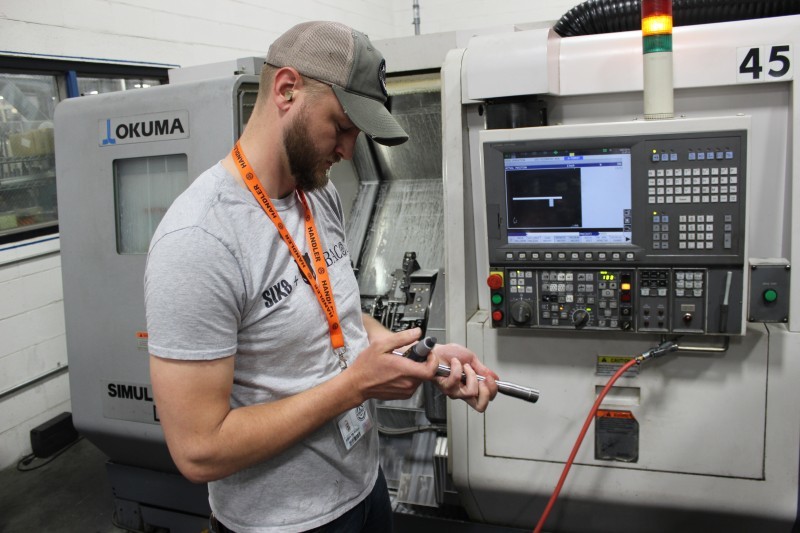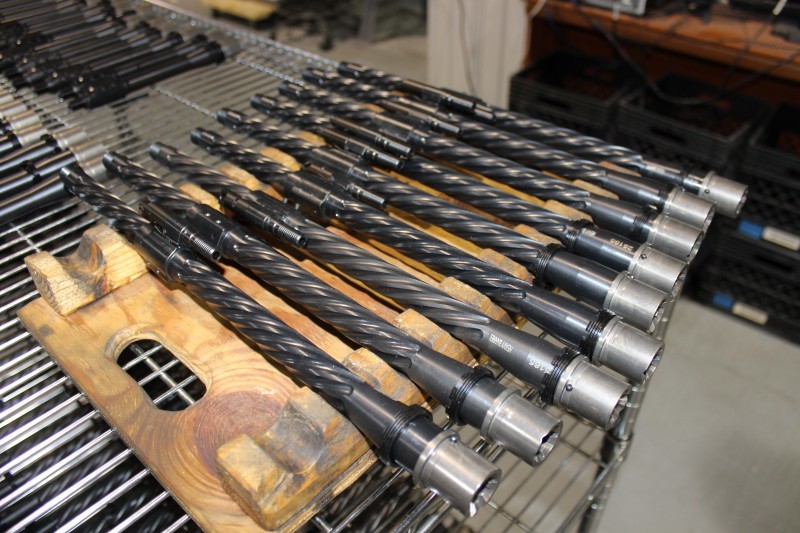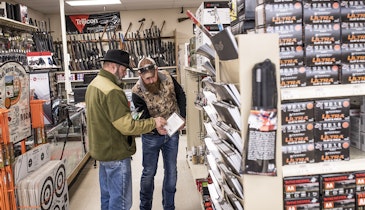Nestled among the prime goose hunting fields and Amish carriages of Maryland’s Eastern Shore, a nondescript warehouse just a few blocks behind the main road houses one of the state’s best kept secrets.
It’s a company whose name is a mouthful of acronymic letters that if you polled 100 gun enthusiasts, maybe five would know what it means. But show them one of the company’s firearms, and you’ll get near universal recognition.
And that’s just how LWRC International wants it.
In an age of sub-$800 AR-15 pattern rifles and a trend toward “upgrade it later” base guns, the firearms made by Cambridge, Maryland-based LWRCI stand apart as high-quality, durable, do-anything guns.
Think of them as the Toyota Land Cruiser of the AR world. It might be expensive, but when you need a rifle that will go anywhere, do anything and last forever, it’s an AR along the lines of an LWRCI that you’ll want to take along for the ride.
“We make what I like to call a ‘luxury AR,’ ” says LWRCI sales and marketing chief Dave Ridley. “Most of our buyers have three ARs already and they’re looking for reliability and accuracy.”
Forged In Combat
Born of the dismantling of the Virginia-based Leitner-Wise Rifle Company and later the Land Warfare Resources Corporation, LWRC International had its breakout moment during the depths of the Iraq war in 2006 with its innovative PSD rifle chambered in 6.8 SPC.
At the time, security contractors in Iraq were looking for a hard-hitting, more accurate rifle for longer engagements that was short enough to fit in armored vehicles and SUVs. LWRC’s 6.8 PSD used a short-stroke gas piston action that took a beating, and the rifle became a favorite for many security details fighting off insurgent ambushes.
Since then the company has refined its rifles and expanded its product line, pursuing product innovations through U.S. and international government contracting as well as developing high-end rifles for the civilian competition, self-defense and hunting markets.
“LWRCI has taken the ground-breaking Stoner design and improved it,” the company says. “Through the application of modern materials, science, creative engineering and advanced manufacturing processes, LWRCI has built a product line that steps up to the challenge.”
LWRC makes everything from short-barreled defensive carbines with a newly designed ultra-short collapsible stock, to .308 precision ARs that meet the specifications of specialized military units. The company recently broke into the hunting market with its Razorback 6.8 rifle tailored for the sportsman whose main quarry are hogs.
And while LWRC builds guns for a range of customers, at the core of its products are the company’s tried-and-true short-stroke gas piston system and focus on quality that borders on the maniacal.
Fractions Of An Inch
Walking into LWRC’s sister company Matech Military Advanced Technology in nearby Salisbury, Maryland, it’s almost as if you’ve entered a design lab for NASA-built spacecraft. With laser measuring devices, ultra-precision CNC machines and glistening rifle parts on spotless workbenches, the dedication to fine manufacturing is pretty obvious.
You’d think the employees here should be wearing lab coats, but with one LWRC employee sporting a “Six8 + pig = bacon” t-shirt, it’s obvious the technicians here practice what they preach.
The company’s machine shop manager Wayne Blake explains that some LWRC rifle parts are measured to tolerances within 1,000th of an inch, and if they fail, they’re scrapped.
LWRC rifles incorporate a host of features that set them apart from the competition; one of the most obvious are the spiral-fluted, cold hammer-forged barrels. They’re made with 41V45 steel alloy and treated with a NiCorr surface conversion; the manufacturing process builds a lightweight barrel that the company says will hold out for 40,000 rounds.
“The Heckler & Koch 416 is our primary competitor,” says LWRC product development chief Jeff Clemmer. “But in terms of longevity, we’ll take the Pepsi challenge against anyone else out there.”
Most of the guts of an LWRCI rifle — including trigger, hammer, barrel extension and bolt carrier — are coated with a patented nickel-alloy finish that the company says creates a greaseless, permanently lubricious coating that’s tougher than chrome and never rubs off.
“We tried to make everything as corrosion-resistant and maintenance-free as possible,” Clemmer adds.
The majority of LWRCI rifles include ambidextrous controls on the lowers that are exactly the same on either side, a big help when the heat is on. The Monoforge uppers are machined with an integrated rail base and a tight barrel fit that uses a proprietary torque ring replacing the usual barrel nut to apply equal pressure around the extension.
And of course, the majority of LWRC’s rifles use the company’s patented Short-stroke gas piston system that keeps the action cool and clean through thousands of rounds in the most brutal conditions.
“Our system changed the game, raised the bar on reliability and ease of maintenance while establishing the highest level of piston performance,” the company says.
Selling “Luxury”
Obviously, with all these features and tight tolerances, LWRC rifles don’t come cheap. Most are well above the $2,000 mark, giving them an appeal to the AR buyer who knows what he’s looking for and wants quality from day one. The company has grown exponentially since its start, raking in about $115 million in 2013 and selling just under 1,000 rifles nationally per year.
LWRC won a contract to supply the Saudi presidential guard with its updated 6.8 PDW short-barreled rifle and is also bidding on the U.S. Army’s Compact Semi-Auto Sniper Rifle program to replace the Knights Armament M110.
The company is also aggressively working to increase its commercial distributor reach, building from about seven to 12 distributors nationwide.
“We feel like some dealers want to build ‘collectability’ in their inventory and they’ll want to step up to try our rifles,” Ridley says. “We think we’ll fit in with just about any market.”
Ridley admits it’s a tough sell these days with AR prices dropping and inventories swelling, but the company recently launched a major promotion to “move rifles across the counter.”
During the summer, LWRC inked a deal with Aimpoint to deliver a brand new Aimpoint Micro T1 red-dot optic with almost every new rifle in the company’s lineup. Buyers have to fill out a rebate form and take it back to their dealer to get the sight.
Not only is this an awesome deal for the consumer, it’s a great deal for the seller.
“Now that dealer will have the customer coming in twice — once to buy the rifle and the other to pick up his Aimpoint,” Ridley explains. “We’re not only helping our dealers move the rifles across the counter, but we’re bringing that customer back a second time for more potential sales.”
LWRCI Handgun?
LWRCI execs agree the market for AR-style rifles is tight these days. But like the Toyota Land Cruiser, there are few substitutes for someone who wants a do-anything rifle right out of the box that can last for a lifetime and beyond.
And while semi-auto rifles are the company’s stock-in-trade, that isn’t stopping it from looking into other firearm designs and accessories.
Ridley said LWRCI may soon release a 3-gun-style competition rifle and is also well along the way to designing a handgun for the concealed carry market.
“We’re looking at something that could be a companion to the high-end AR,” Riley said of the company’s pistol offering.
And a short look at the R&D offices of LWRC gives a few more hints of the future, with prototype suppressors and even a hunting bolt gun mixed in with rifles both past and present.
Needless to say, if LWRC does stretch its lines into other firearms markets, the consumer will be looking at the same innovation and dedication to quality that marks the company’s battle-tested, high-quality AR-style rifles.








